Abstract
1. Stimulation of the thoracic sympathetic nerve trunk caused a rise in arterial blood pressure and heart rate which was reduced but not abolished during the infusion of hexamethonium chloride, pentolinium tartrate, mecamylamine or tetraethylammonium chloride.
2. Preganglionic stimulation no longer elicited a synchronous sC elevation in the post-ganglionic nerves. The persistent blood pressure and heart rate response was associated with an asynchronous discharge in these nerves.
3. Both the persistent response and the asynchronous discharge were abolished by the intravenous injection of atropine sulphate in doses of 30 μg/kg.
4. Atropine had no effect on spike amplitude or shape, conduction velocity or frequency response in either the pre- or post-ganglionic nerve trunks. Nor did it affect the rise in blood pressure and heart rate evoked by stimulation of the post-ganglionic cardiac sympathetic nerves.
5. It is concluded that atropine partially blocked synaptic transmission in cardiac sympathetic adrenergic pathways.
Full text
PDF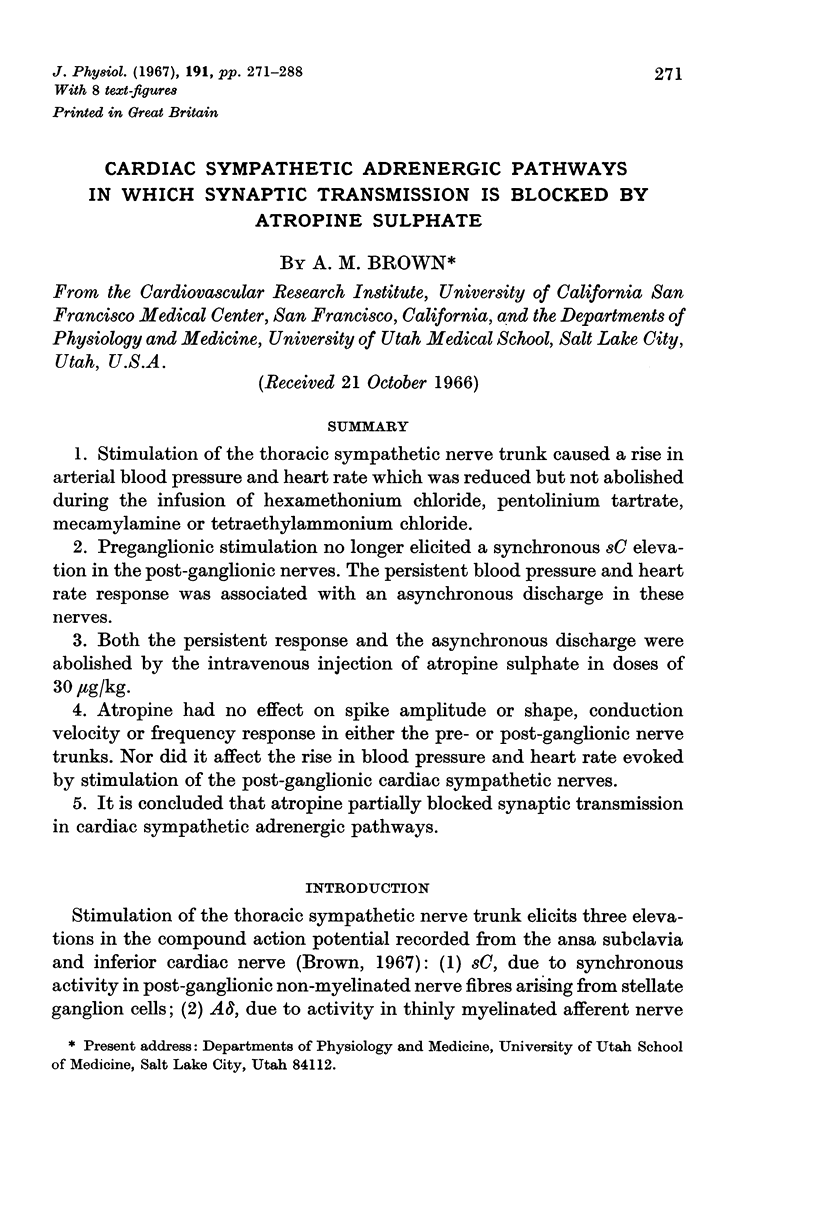
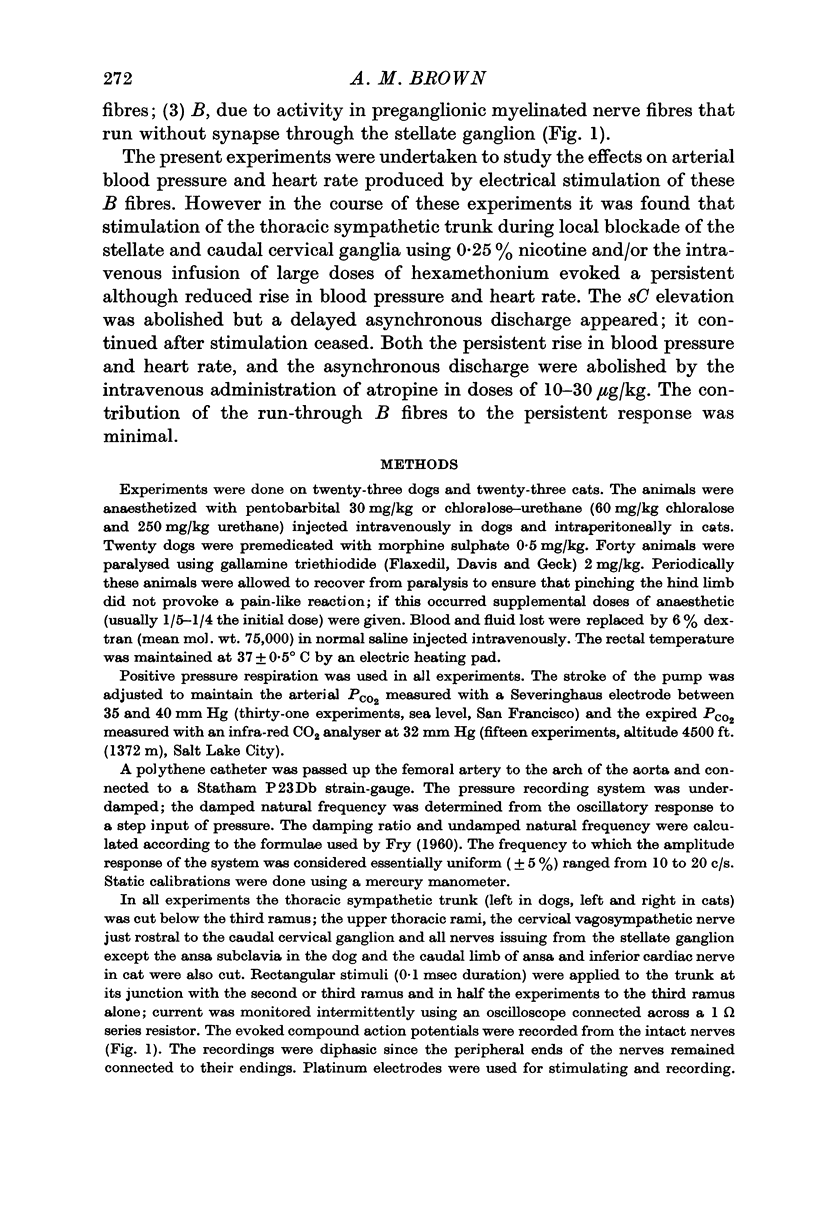
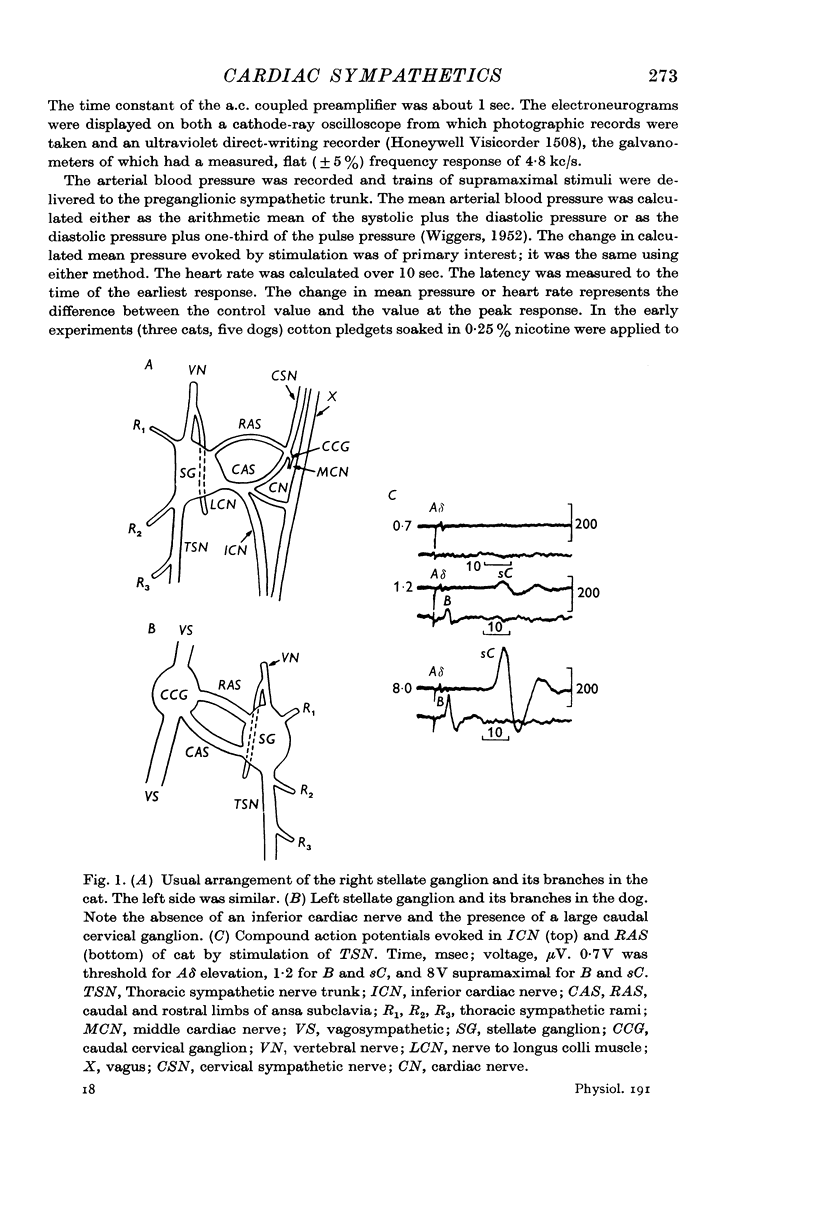
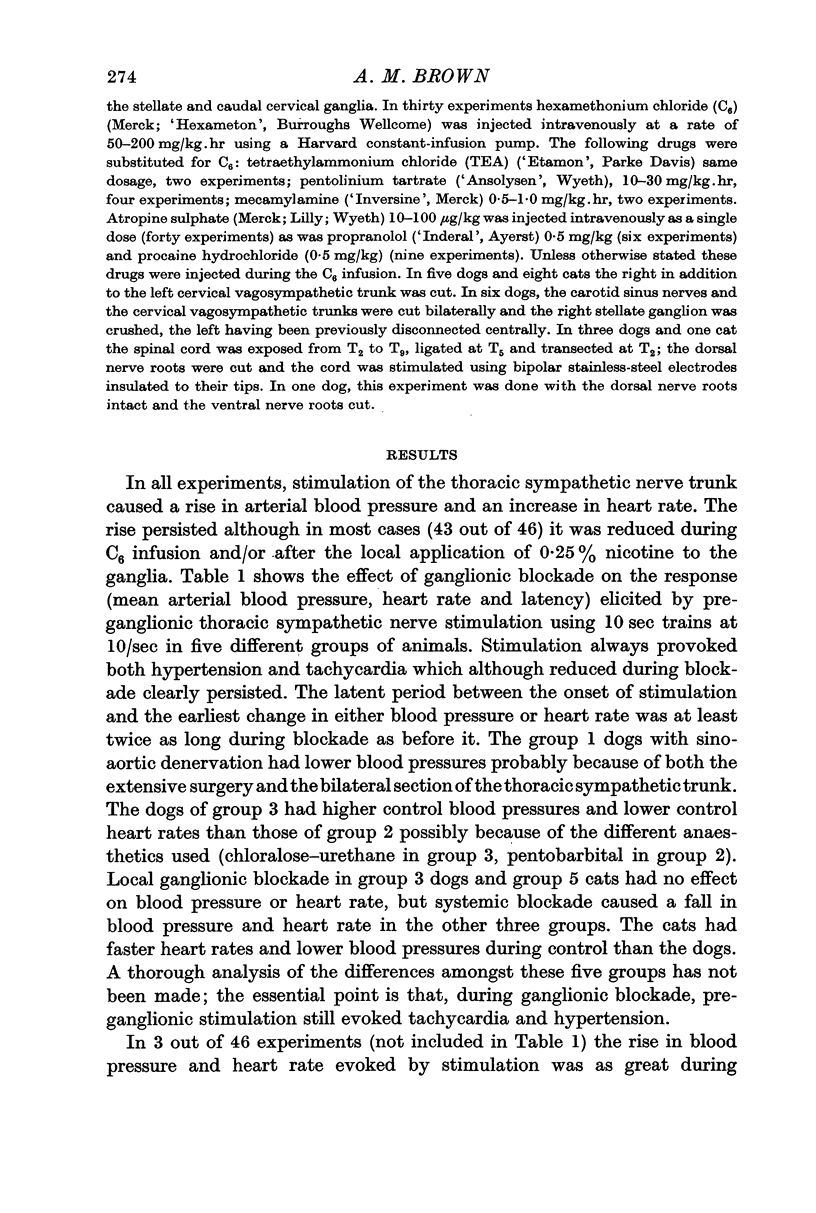
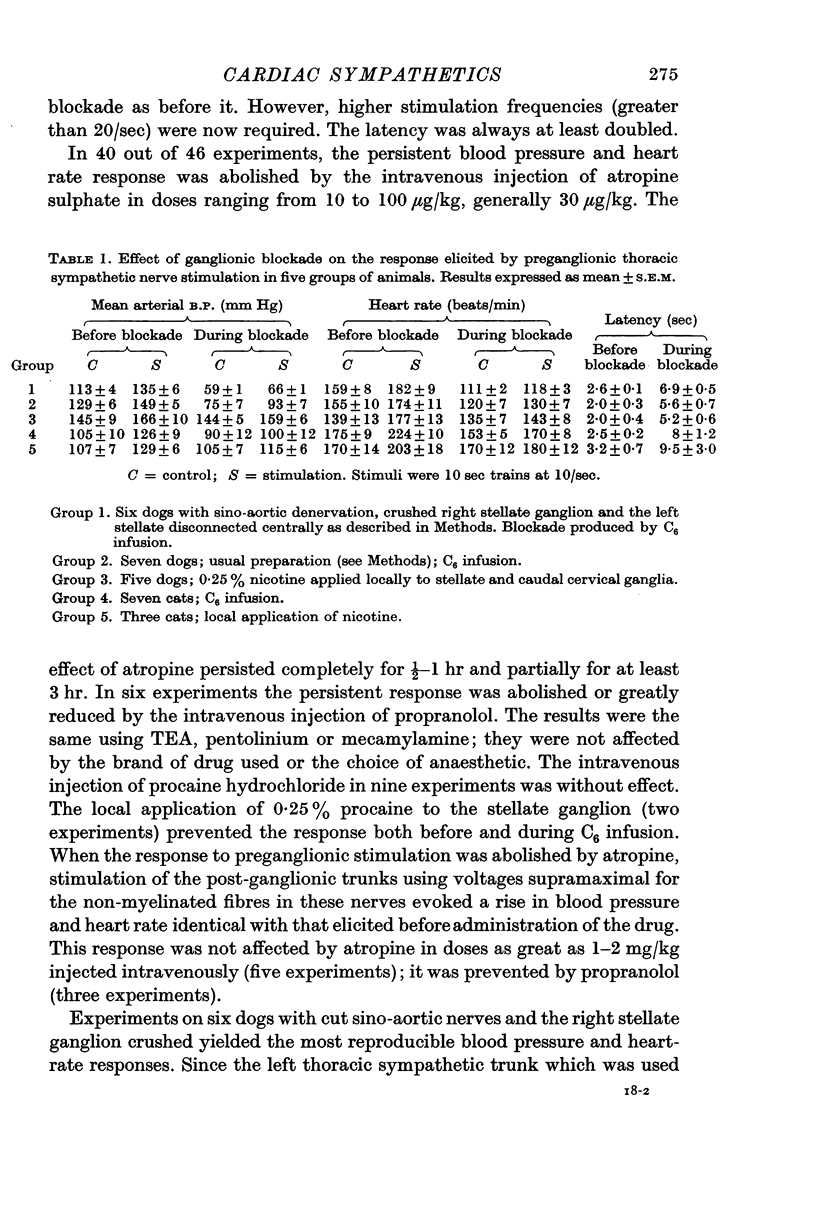
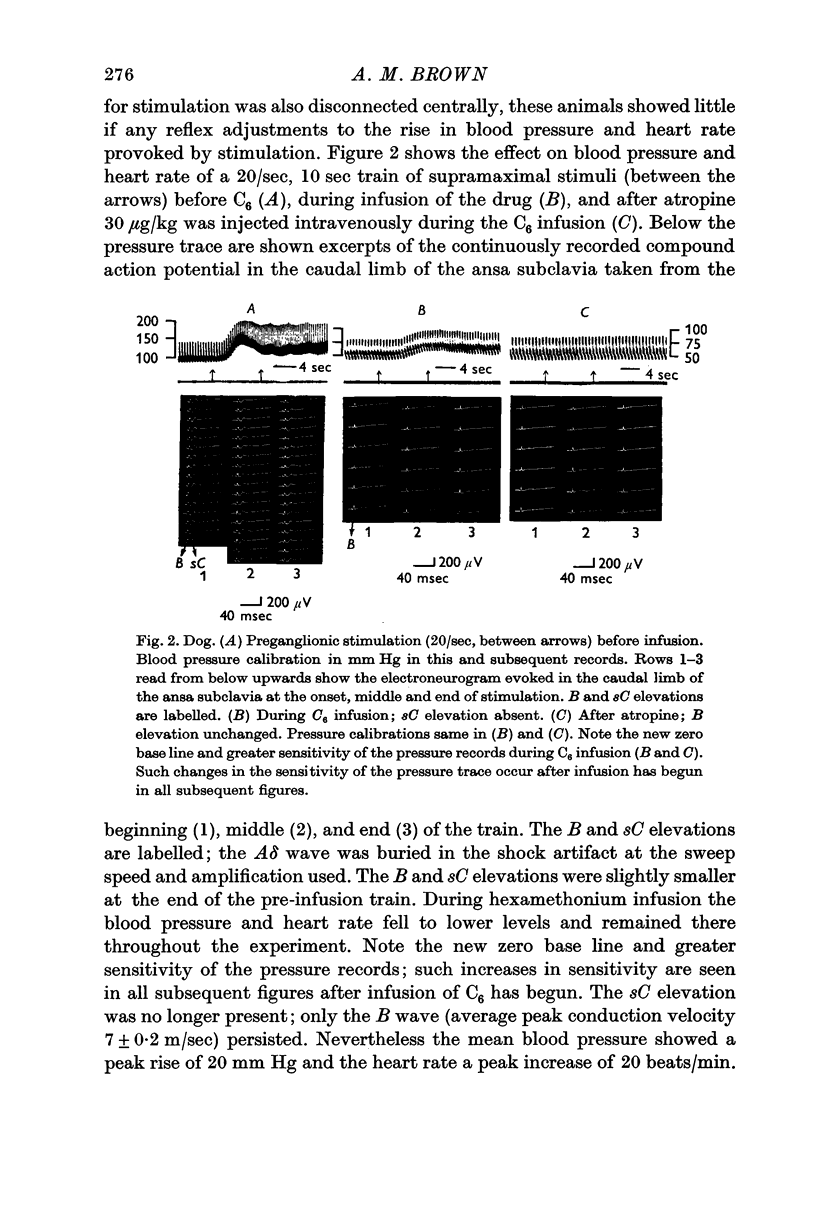
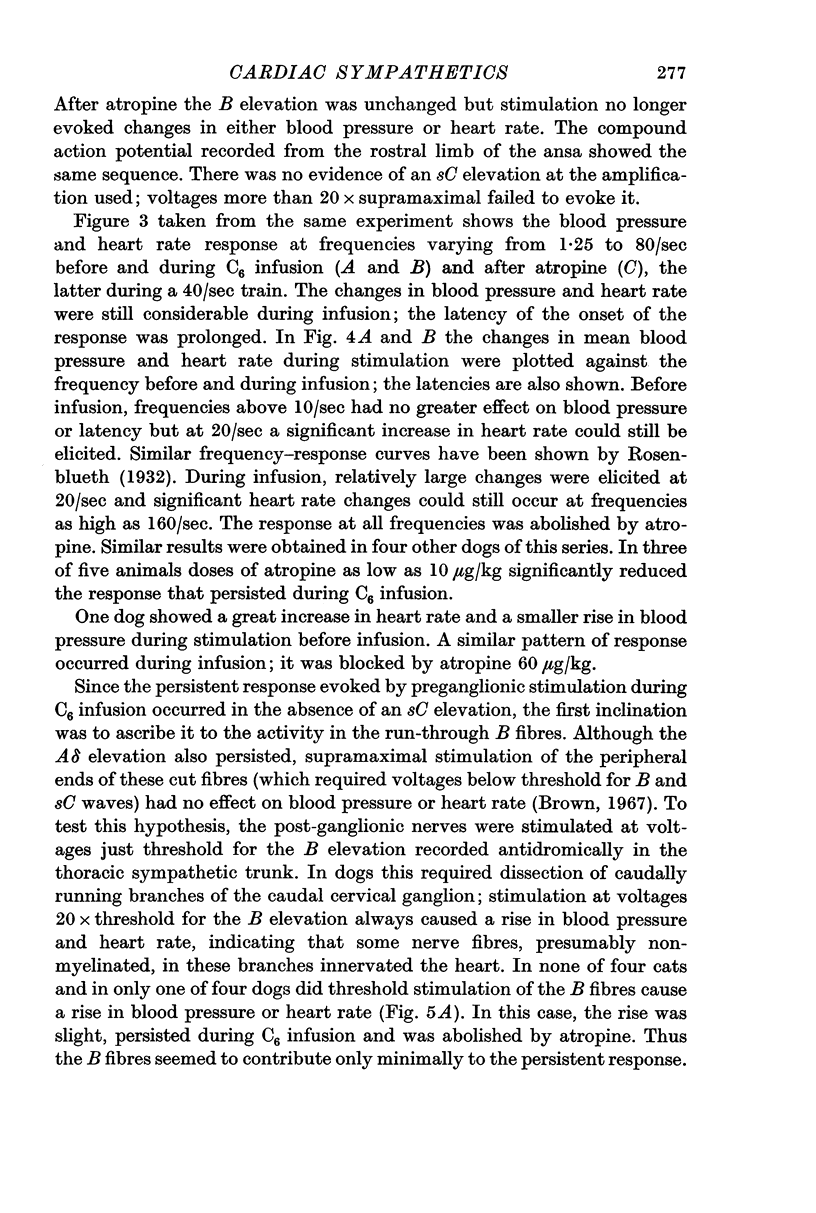
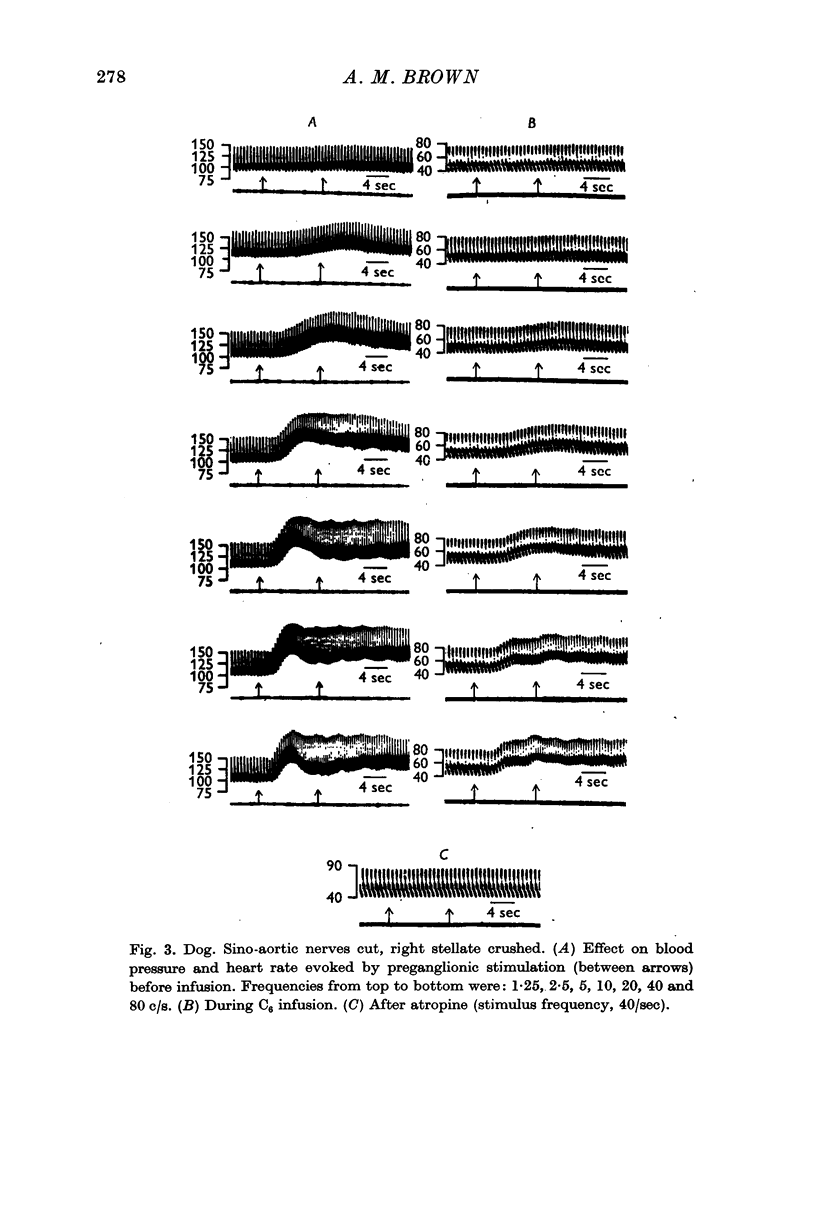
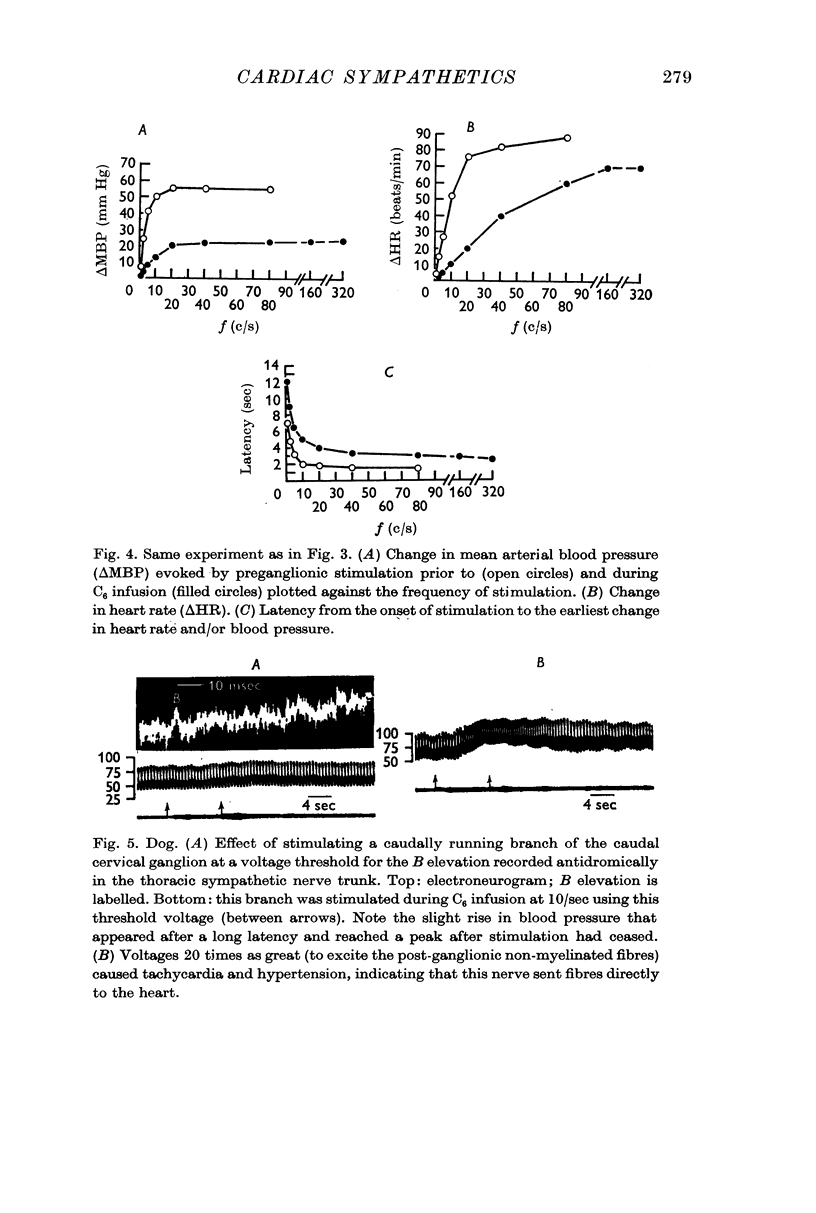
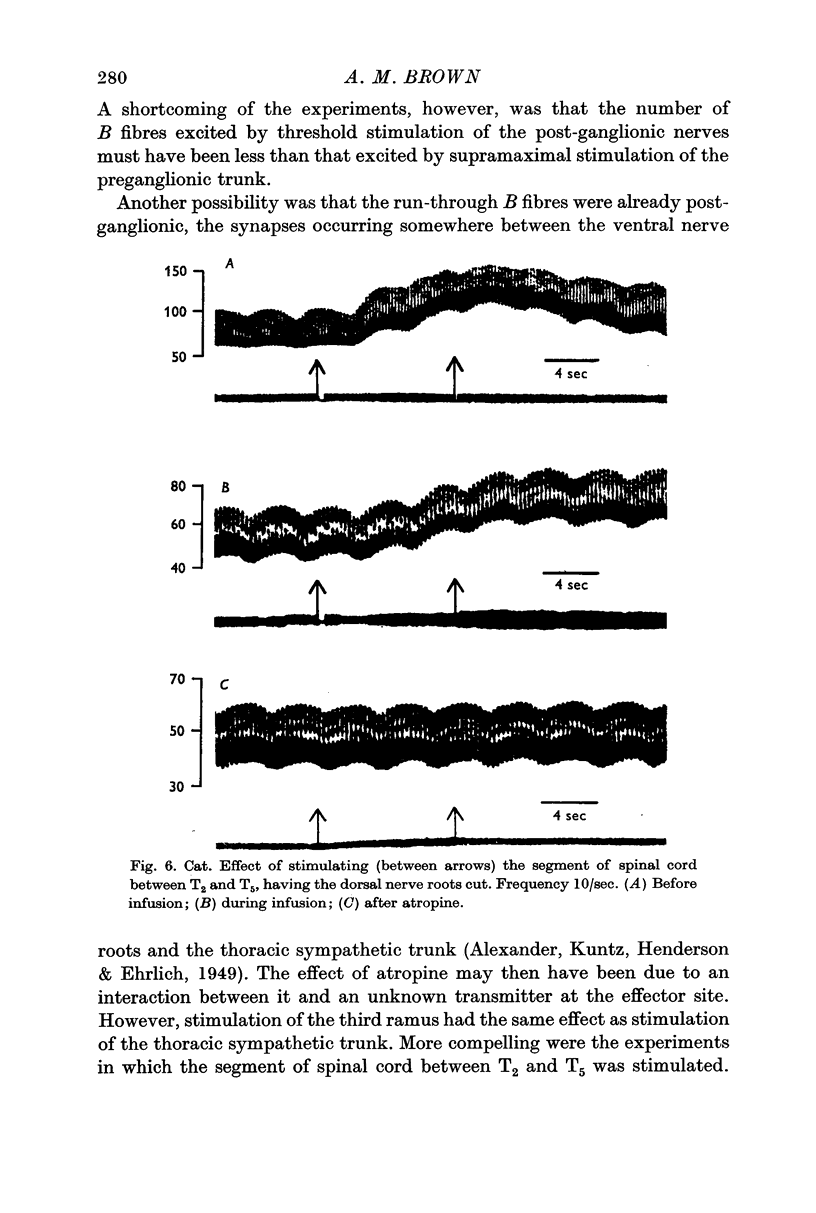
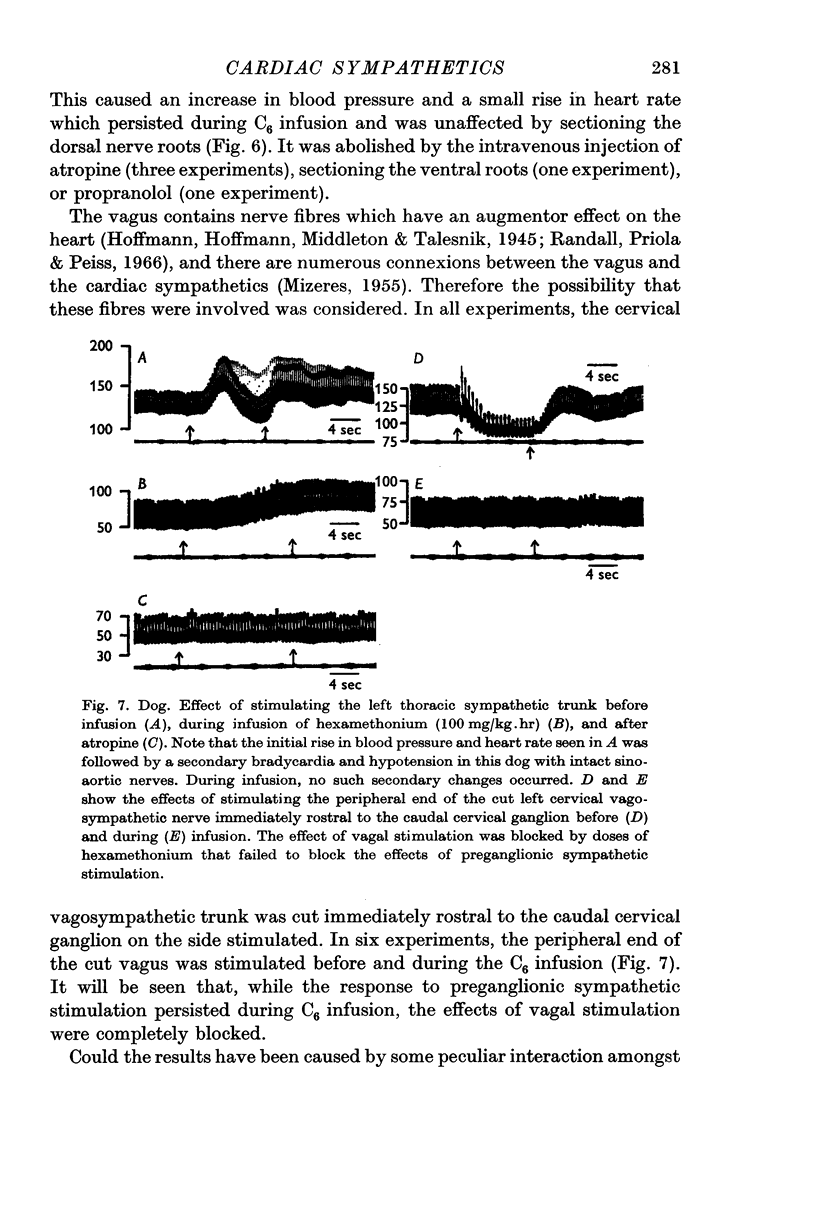
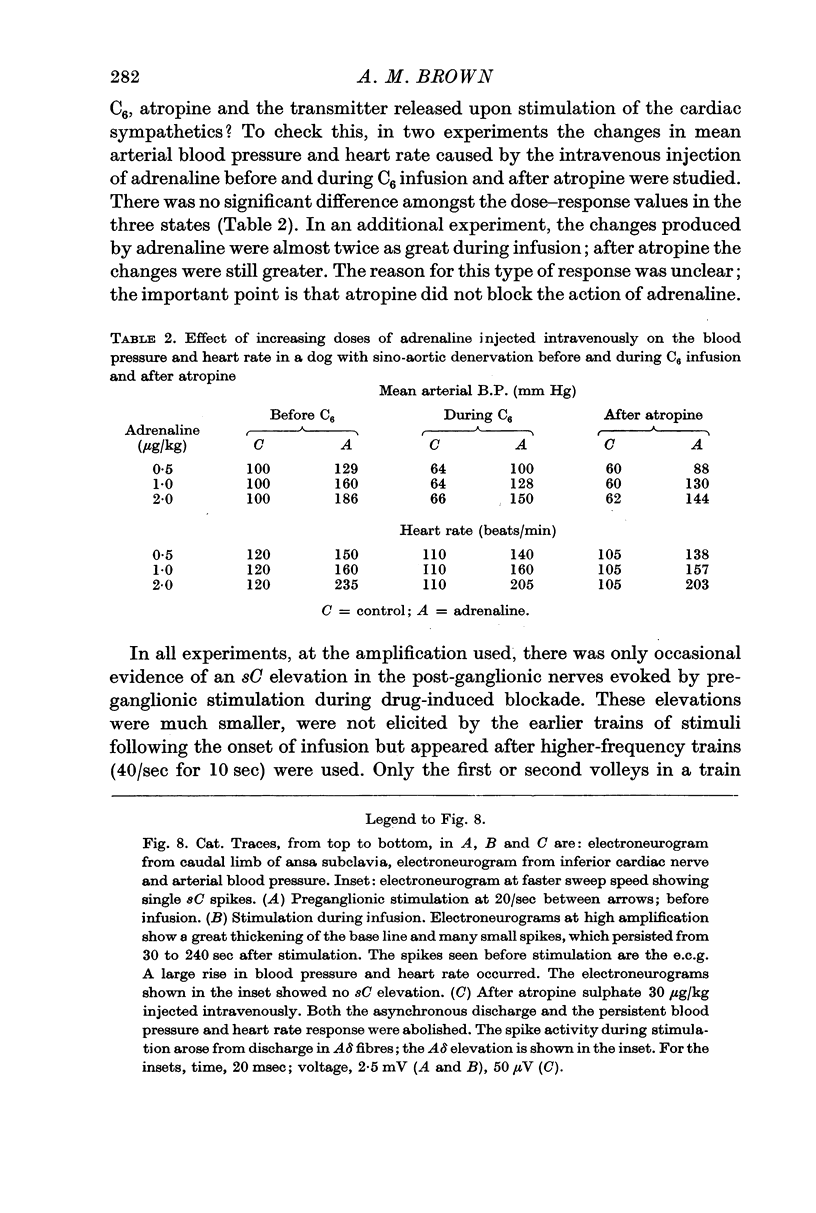
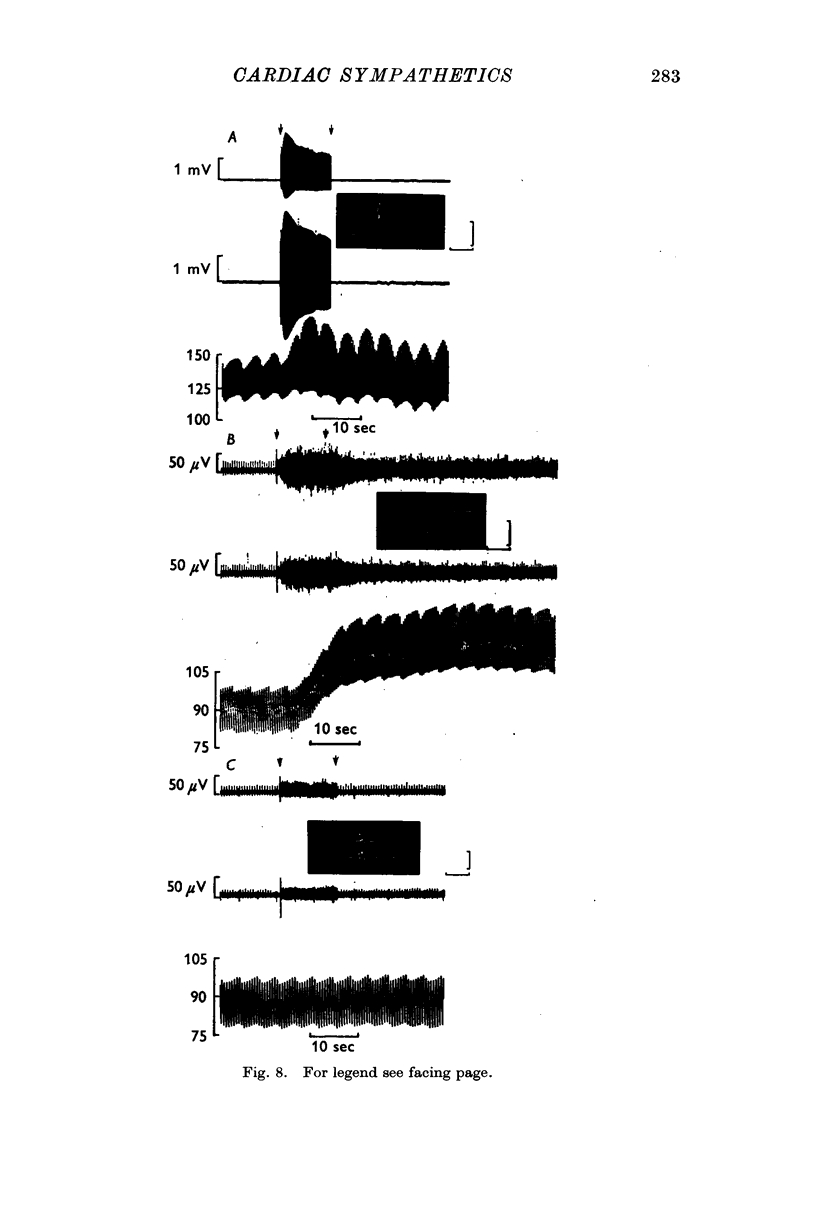
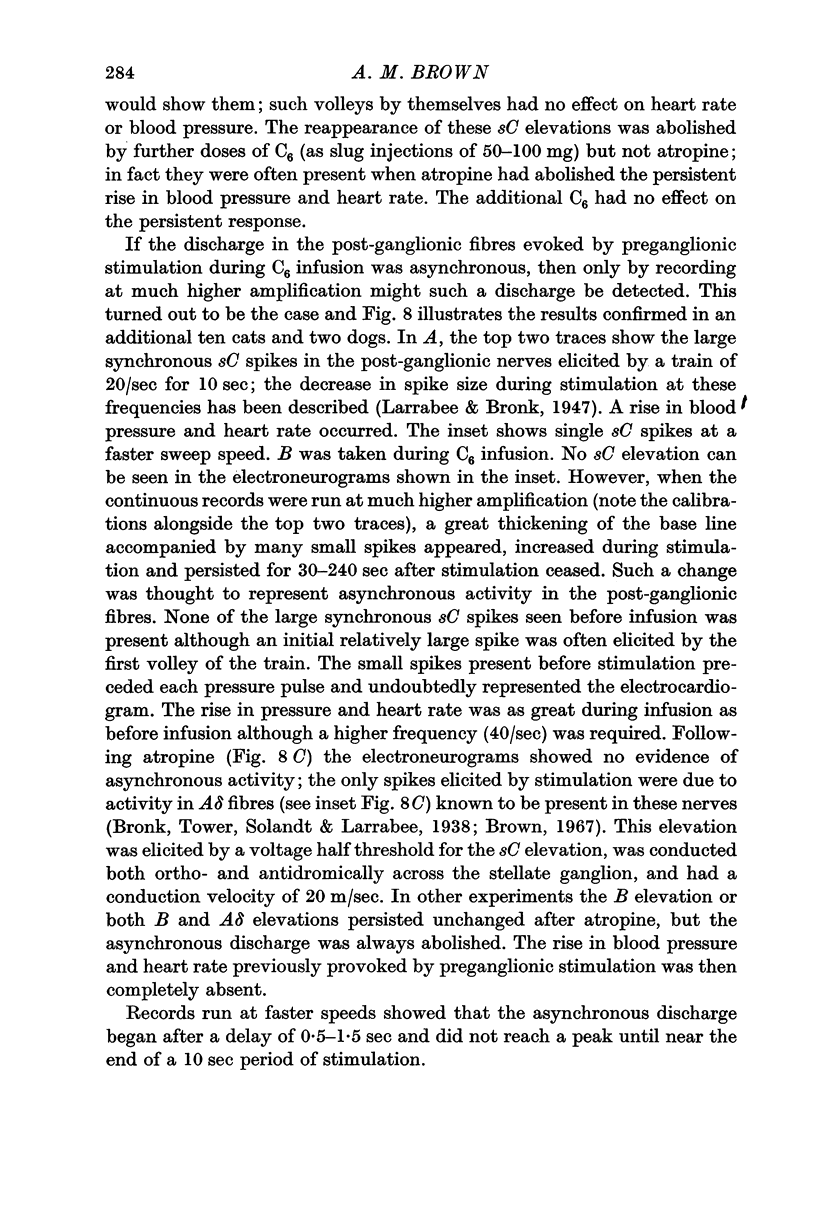
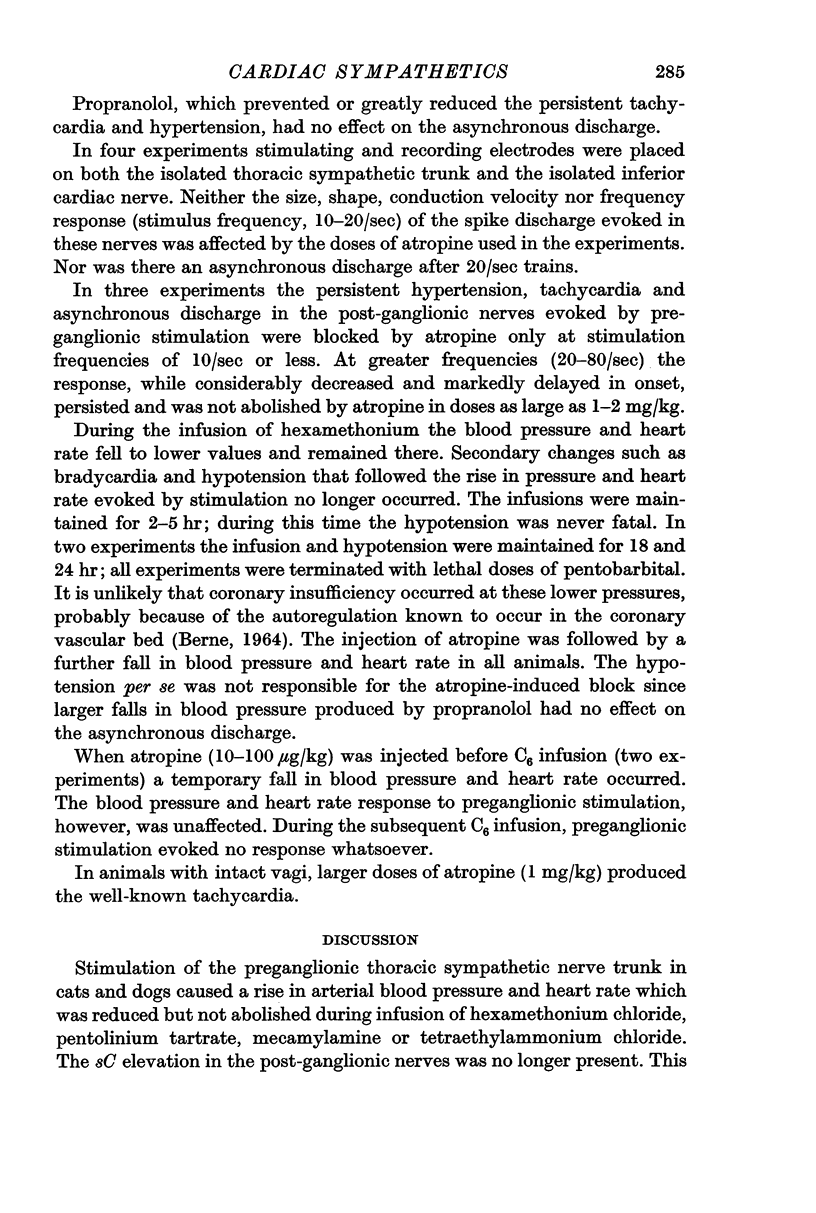
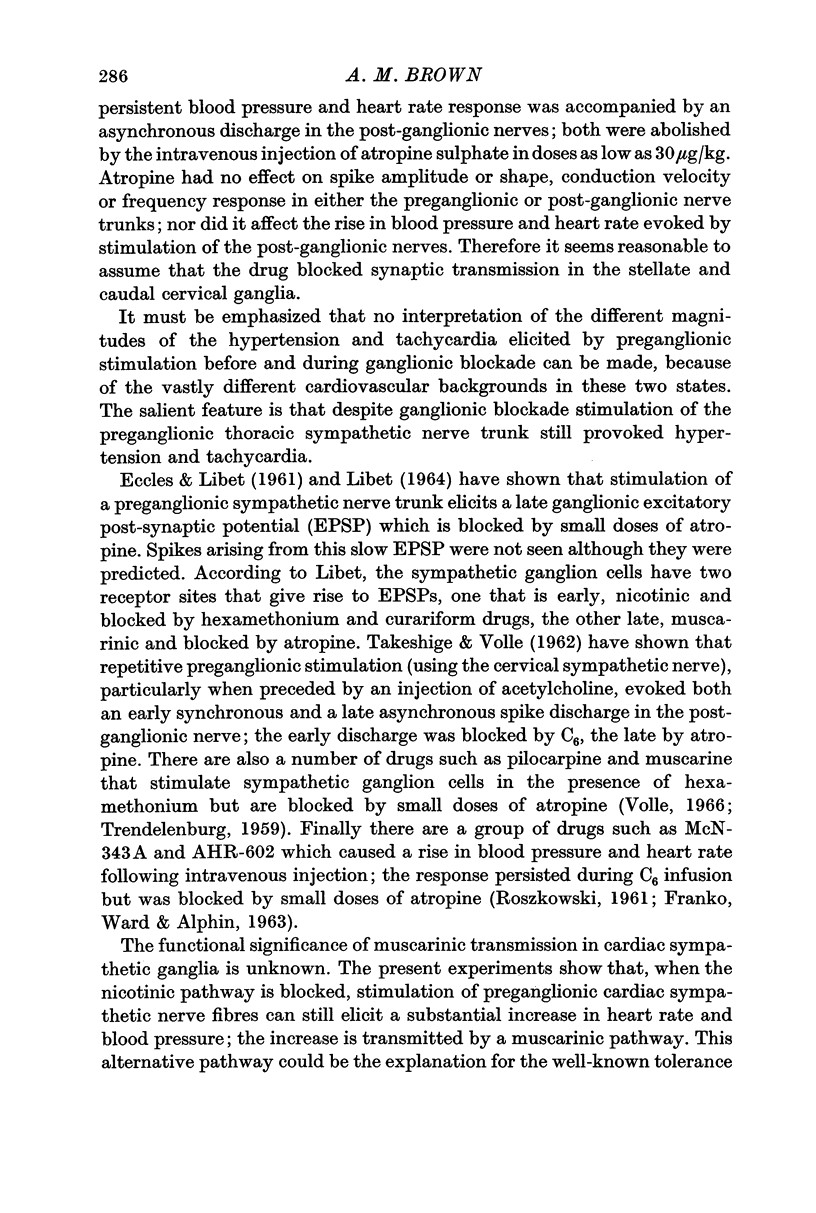
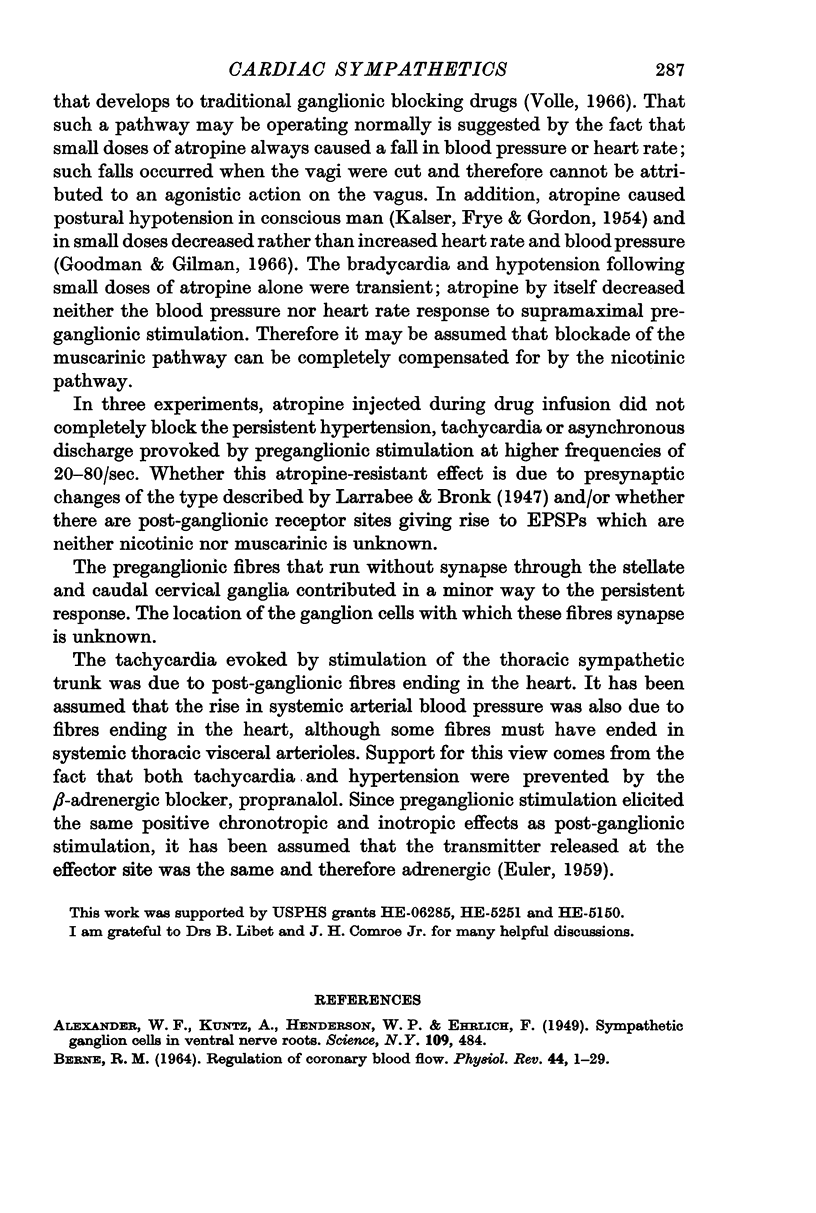
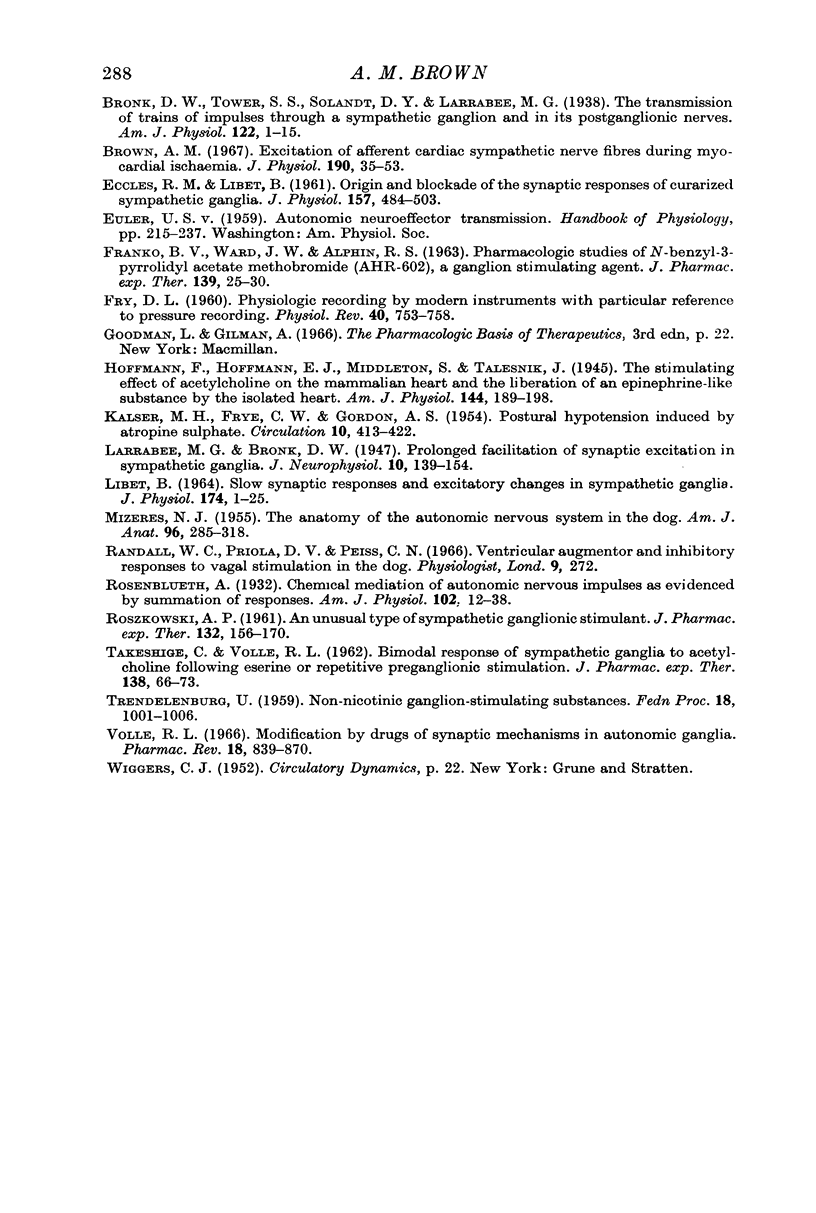
Selected References
These references are in PubMed. This may not be the complete list of references from this article.
- Alexander W. F., Kuntz A., Henderson W. P., Ehrlich E. Sympathetic Ganglion Cells in Ventral Nerve Roots. Their Relation to Sympathectomy. Science. 1949 May 13;109(2837):484–484. doi: 10.1126/science.109.2837.484. [DOI] [PubMed] [Google Scholar]
- BERNE R. M. REGULATION OF CORONARY BLOOD FLOW. Physiol Rev. 1964 Jan;44:1–29. doi: 10.1152/physrev.1964.44.1.1. [DOI] [PubMed] [Google Scholar]
- Brown A. M. Excitation of afferent cardiac sympathetic nerve fibres during myocardial ischaemia. J Physiol. 1967 May;190(1):35–53. doi: 10.1113/jphysiol.1967.sp008191. [DOI] [PMC free article] [PubMed] [Google Scholar]
- ECCLES R. M., LIBET B. Origin and blockade of the synaptic responses of curarized sympathetic ganglia. J Physiol. 1961 Aug;157:484–503. doi: 10.1113/jphysiol.1961.sp006738. [DOI] [PMC free article] [PubMed] [Google Scholar]
- FRY D. L. Physiologic recording by modern instruments with particular reference to pressure recording. Physiol Rev. 1960 Oct;40:753–788. doi: 10.1152/physrev.1960.40.4.753. [DOI] [PubMed] [Google Scholar]
- KALSER M. H., FRYE C. W., GORDON A. S. Postural hypotension induced by atropine sulfate. Circulation. 1954 Sep;10(3):413–422. doi: 10.1161/01.cir.10.3.413. [DOI] [PubMed] [Google Scholar]
- LIBET B. SLOW SYNAPTIC RESPONSES AND EXCITATORY CHANGES IN SYMPATHETIC GANGLIA. J Physiol. 1964 Oct;174:1–25. doi: 10.1113/jphysiol.1964.sp007471. [DOI] [PMC free article] [PubMed] [Google Scholar]
- MIZERES N. J. The anatomy of the autonomic nervous system in the dog. Am J Anat. 1955 Mar;96(2):285–318. doi: 10.1002/aja.1000960205. [DOI] [PubMed] [Google Scholar]
- ROSZKOWSKI A. P. An unusual type of sympathetic ganglionic stimulant. J Pharmacol Exp Ther. 1961 May;132:156–170. [PubMed] [Google Scholar]
- TAKESHIGE C., VOLLE R. L. Bimodal response of sympathetic ganglia to acetylcholine following eserine or repetitive preganglionic stimulation. J Pharmacol Exp Ther. 1962 Oct;138:66–73. [PubMed] [Google Scholar]
- TRENDELENBURG U. Non-nicotinic ganglion-stimulating substances. Fed Proc. 1959 Dec;18:1001–1005. [PubMed] [Google Scholar]


